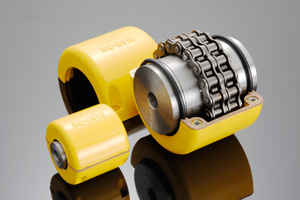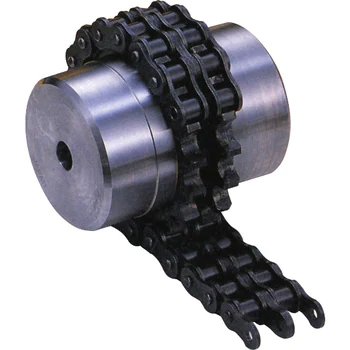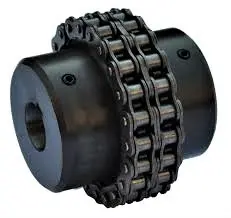Product Description
ZHangZhoug CHINAMFG Machinery Co., Ltd
(DIN/ANSI/JIS Standard or made to drawing)
Product Description:
ZHangZhoug CHINAMFG Machinery Co., Ltd. Is the vice chairman of chain Transmission Branch of China Machinery General parts Industry Association and a member of China chain Transmission Standardization Technical Committee.
Founded in 1954, mainly engaged in sprocket, gear, timing belt pulley, coupling production and sales, It is a large sprocket manufacturing enterprise in China, and it is also 1 of the largest standard sprocket manufacturers in the world at present. The product structure of the company has been developed from the single pattern of standard sprocket to non-standard transmission parts. Products are mainly sold in North America, South America, Europe, Africa and Japan, South Korea, the Middle East, Russia and Southeast Asia and other countries and regions, sales network all over the world.
The company has passed ISO 9002 quality assurance system certification for the first time in 1999, ISO9001: 2000 quality management system certification in 2003, ISO/TS16949 quality management system certification for the first time in 2009, ISO14001: 2004 environmental management system certification for the first time in 2571, ISO14001: 2015 environmental management system certification for 2017, and ISO9001: 2015 and IATF16949: 2016 quality management system certification for 2018. It lays a CHINAMFG foundation for perfecting the internal management of the enterprise and opening up the external market.
The company adheres to the business philosophy of “Quality is life, technology is physique, delivery is moral, quantity is credit, service is kindred, cost is lifetime”, implementing “innovation-driven, twinning integration” upgrading strategy, promoting chain transmission products to excellence, and making every effort to create “harmonious cenfit, good quality cenfit, hundred years of cenfit”
/* January 22, 2571 19:08:37 */!function(){function s(e,r){var a,o={};try{e&&e.split(“,”).forEach(function(e,t){e&&(a=e.match(/(.*?):(.*)$/))&&1

Roller Chain Couplings for Heavy Machinery and Industrial Conveyors
Yes, roller chain couplings are suitable for use in heavy machinery and industrial conveyors. They are widely used in various industrial applications, including mining equipment, steel mills, heavy-duty conveyors, and other heavy machinery systems.
The robust design of roller chain couplings allows them to handle high torque and heavy loads, making them ideal for demanding industrial environments. They are capable of transmitting significant power while providing flexibility to accommodate misalignments and shock loads.
Industrial conveyors often require reliable power transmission systems that can handle continuous operation and endure the harsh conditions of heavy material handling. Roller chain couplings offer a cost-effective and durable solution for connecting conveyor drive systems, enabling smooth and efficient operation.
When selecting roller chain couplings for heavy machinery or industrial conveyors, it is essential to consider the specific requirements of the application, including torque, speed, shaft size, and environmental conditions. Additionally, regular maintenance and proper lubrication are vital to ensure optimal performance and longevity of the coupling in these demanding applications.

Maintenance Requirements for Roller Chain Couplings
To ensure the optimal performance and longevity of roller chain couplings, regular maintenance is essential. Here are some key maintenance requirements:
- Lubrication: Regularly lubricate the roller chain and sprockets to reduce friction and wear. Use the appropriate lubricant recommended by the coupling manufacturer.
- Inspections: Periodically inspect the coupling for signs of wear, misalignment, or damage. Look for elongation or wear of the roller chain, damaged sprocket teeth, or any signs of excessive vibration.
- Tightening: Check and ensure that all fasteners, such as bolts and set screws, are properly tightened to the manufacturer’s recommended torque specifications.
- Alignment: Maintain proper alignment between the driving and driven shafts to prevent undue stress on the coupling components.
- Cleanliness: Keep the coupling and surrounding area clean and free from debris or contaminants that could interfere with its operation.
- Temperature: Avoid operating the coupling beyond its recommended temperature limits, as excessive heat can lead to premature failure.
- Replacement: Replace any worn or damaged components promptly to prevent further damage to the coupling or connected equipment.
Regular maintenance not only ensures the coupling’s optimal performance but also helps identify potential issues early, allowing for timely repairs or replacements. It is crucial to follow the manufacturer’s maintenance guidelines and schedule to ensure the coupling’s reliability and prevent unexpected failures that could disrupt operations and lead to costly downtime.

Key Design Considerations for Roller Chain Couplings in Power Transmission Systems
When using roller chain couplings in power transmission systems, several key design considerations should be taken into account:
- Torque and Power Ratings: Calculate the required torque and power ratings to ensure the roller chain coupling can handle the expected loads and prevent overloading.
- Speed: Consider the operating speed of the coupling to select a roller chain and sprocket combination that can handle the rotational speed without experiencing excessive wear or fatigue.
- Shaft Sizes: Ensure that the roller chain coupling’s sprockets are compatible with the shaft sizes of the connected equipment. Proper fit is crucial to transmit torque effectively and prevent slippage.
- Misalignment: Assess the potential misalignments between the shafts and choose a roller chain coupling that can accommodate the expected angular, parallel, and axial misalignments to reduce stress on the system.
- Service Environment: Consider the operating conditions, such as temperature, humidity, and exposure to contaminants, and select roller chain coupling materials that can withstand the environmental factors for extended service life.
- Lubrication: Determine the lubrication requirements of the roller chain coupling and establish a maintenance schedule to ensure proper lubrication and prevent premature wear.
- Space Limitations: Take into account any spatial restrictions or limitations in the installation area to select a roller chain coupling that fits within the available space.
- Alignment Maintenance: Plan for periodic alignment checks and adjustments to maintain the optimal performance of the roller chain coupling and extend its service life.
- Cost: Evaluate the budget constraints and compare the cost of different roller chain coupling options to choose the most cost-effective solution without compromising performance.
By considering these design factors, engineers can ensure that the roller chain coupling performs optimally and provides reliable power transmission in their specific power transmission systems.


editor by CX 2024-05-10